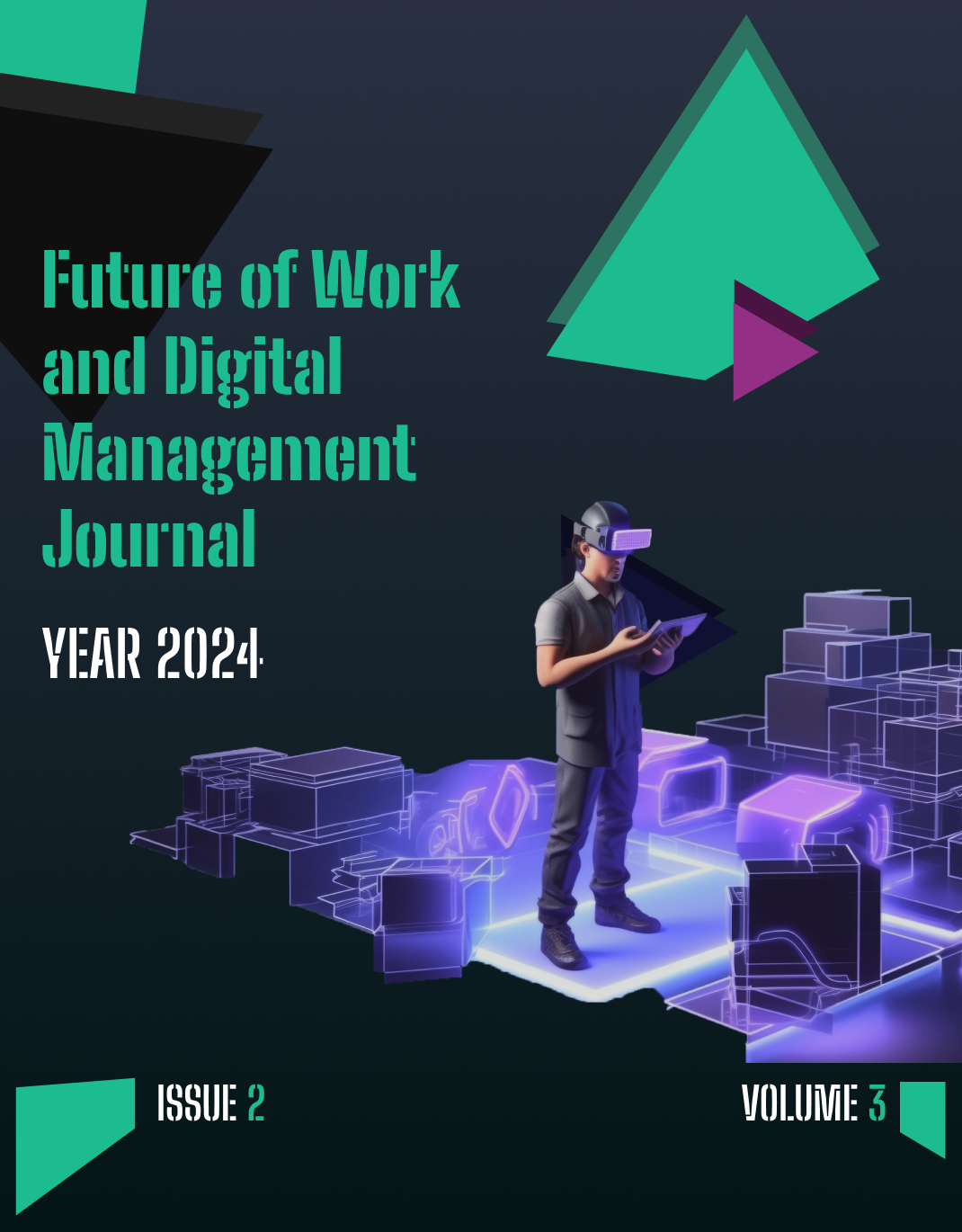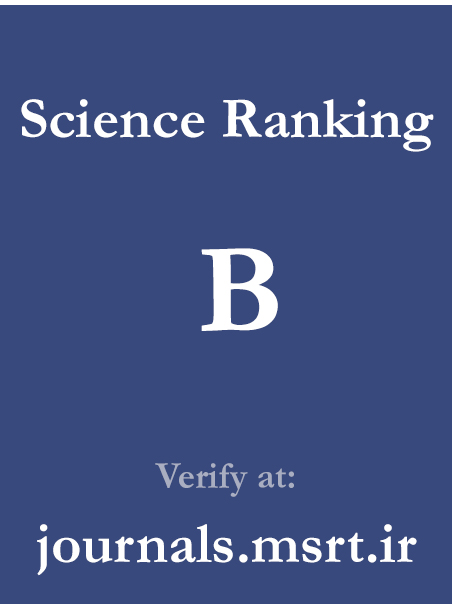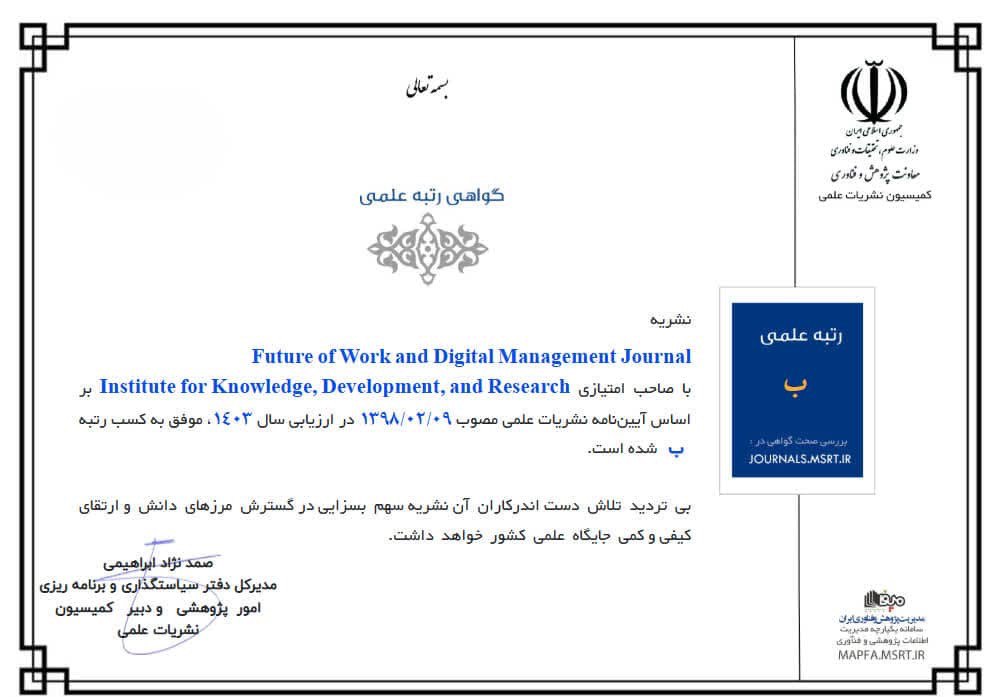Organizational Ambidexterity in Digitally Mediated Teams
Keywords:
Organizational ambidexterity, digitally mediated teams, virtual collaboration, digital transformation, team learningAbstract
This study aimed to explore how organizational ambidexterity is enacted within digitally mediated teams, with a focus on the mechanisms through which team members balance exploration and exploitation in virtual work environments. This qualitative study employed a thematic analysis approach using semi-structured interviews with 24 professionals from various industries in Bulgaria, all of whom had experience working in digitally mediated teams. Participants were selected through purposive sampling, and data collection continued until theoretical saturation was achieved. The interviews were conducted via video conferencing platforms, transcribed verbatim, and analyzed using NVivo software. The coding process followed an inductive strategy to identify emergent themes related to role management, communication practices, learning behaviors, and adaptive strategies in virtual settings. Three main categories emerged from the data: Balancing Exploration and Exploitation, Digital Communication and Team Dynamics, and Adaptive Learning and Innovation. Participants emphasized the importance of role flexibility, strategic time management, trust-building mechanisms, continuous skill development, and psychological safety in navigating dual demands. They reported challenges such as digital fatigue, asynchronous misalignment, and unclear performance metrics. However, teams that fostered reflexivity, encouraged safe failure, and integrated digital tools thoughtfully were better equipped to sustain both innovative and operational goals. Quotations from participants illustrated how ambidexterity was embedded in team routines and decision-making processes. The study reveals that organizational ambidexterity in digitally mediated teams is not solely a technological or structural outcome but a dynamic, human-centered process shaped by leadership behavior, communication practices, and team reflexivity. The findings contribute practical insights for organizations seeking to enhance team adaptability, innovation, and execution in digital work environments.
Downloads
References
[1] A. Asrifan, T. Syamsu, E. Apriani, K. J. Vargheese, R. E. Rasyid, and M. H. A. Aqad, "Virtual Collaboration Evolution," pp. 1-30, 2024, doi: 10.4018/979-8-3693-6839-8.ch001.
[2] O. Zolotina, Т. О. Разумова, Y. A. Sotnikov, A. V. Nastavnyuk, and H. Frerichs, "Digital Transformation of High-Performing Teams," Population and Economics, vol. 7, no. 2, pp. 60-93, 2023, doi: 10.3897/popecon.7.e98911.
[3] H. Yi, K. Duan, G. Yang, and X. Su, "Exploring the Digital Transformation Model Based on Agile Management – In Case of the Tobacco Business Companies in Bijie City," 2024, doi: 10.3233/faia240272.
[4] I. Danardono and S. Musa, "Dampak Integrasi Perilaku TMT Dan Kualitas Pengambilan Keputusan Terhadap Transformasi Digital, Keunggulan Bersaing Yang Berkelanjutan Dan Kinerja Perusahaan," Al-Kharaj Jurnal Ekonomi Keuangan & Bisnis Syariah, vol. 6, no. 7, 2024, doi: 10.47467/alkharaj.v6i7.2731.
[5] J. Yoon, Y. Jeong, and M. Kim, "Shared Leadership, Dynamic Capability, and Effectiveness in Teams: The Case of Korean Firms," Journal of Leadership Studies, vol. 16, no. 4, pp. 4-21, 2023, doi: 10.1002/jls.21830.
[6] V. Krajčík, O. Novotný, M. Civelek, and S. S. Zvolánková, "Digital Literacy and Digital Transformation Activities of Service and Manufacturing SMEs," Journal of Tourism and Services, vol. 14, no. 26, pp. 242-262, 2023, doi: 10.29036/jots.v14i26.551.
[7] B. G. V. Pradana and A. Mayasari, "Digital Transformation: The Role of the Big Five Personality Traits," Jurnal Pendidikan Ekonomi Dan Bisnis (Jpeb), vol. 11, no. 01, pp. 66-79, 2023, doi: 10.21009/jpeb.011.1.6.
[8] Y. Zhou, "An Empirical Analysis of the Relationship Between Digital Transformation and Supply Chain Centralization," Highlights in Business Economics and Management, vol. 40, pp. 750-758, 2024, doi: 10.54097/dp5jrf23.
[9] S. B. Ghrbeia and A. Alzubi, "Building Micro-Foundations for Digital Transformation: A Moderated Mediation Model of the Interplay Between Digital Literacy and Digital Transformation," Sustainability, vol. 16, no. 9, p. 3749, 2024, doi: 10.3390/su16093749.
[10] F. Mashood, A. Razak, F. I. Yussof, N. Ishak, and A. Azman, "Measuring Virtual Team Performance via Team-Based Learning in Serious Games," pp. 68-78, 2023, doi: 10.2991/978-2-38476-196-8_7.
[11] Z. Fang, S. Dai, and G. Wang, "The Practical Path and Management Innovation of Team Digital Transformation," Modern Economics & Management Forum, vol. 5, no. 4, p. 682, 2024, doi: 10.32629/memf.v5i4.2563.
[12] O. G. Eyieyien, C. Idemudia, P. O. Paul, and T. I. Ijomah, "Strategic Approaches for Successful Digital Transformation in Project Management Across Industries," International Journal of Frontiers in Engineering and Technology Research, vol. 7, no. 1, pp. 01-011, 2024, doi: 10.53294/ijfetr.2024.7.1.0037.
[13] I. Milhailova, "Scaling Fast, Failing Faster: Entrepreneurial Team’s Capabilities for Achieving Realized Digital Scaling," Emprendimiento Y Negocios Internacionales, no. 8.1 (2023), pp. 5-9, 2023, doi: 10.20420/eni.2023.639.
[14] D. Subiyanto, U. Wahidah, E. Septyarini, and A. B. Arjuna, "Digital Leadership: Predicting Team Dynamics, Communication Effectiveness, and Team Performance," The Winners, vol. 25, no. 1, pp. 35-47, 2024, doi: 10.21512/tw.v25i1.11678.
[15] E. S. Shchadnev, E. A. Klevtsova, and M. V. Shamardina, "Digital Transformation as an Innovation Factor in the Activities of Companies in the Construction Industry," Economics Profession Business, no. 4, pp. 153-158, 2024, doi: 10.14258/epb202467.
[16] D. V. Khomiakov and Е. Печерица, "Challenges of Team Building in the Context of Digitalization at Production Facilities," Sociology and Law, vol. 16, no. 2, pp. 214-222, 2024, doi: 10.35854/2219-6242-2024-2-214-222.
[17] R. Karimi, M. B. Shishehgarkhaneh, R. C. Moehler, and Y. Fang, "Exploring the Impact of Social Media Use on Team Feedback and Team Performance in Construction Projects: A Systematic Literature Review," Buildings, vol. 14, no. 2, p. 528, 2024, doi: 10.3390/buildings14020528.
[18] M. U. Siddqiue, S. U. Bajwa, and A. Arshad, "Navigating Entrepreneurial Journeys in the Digital Era: A Case Study on Motivations, Strategies, and Challenges," Journal of Development and Social Sciences, vol. 4, no. IV, 2023, doi: 10.47205/jdss.2023(4-iv)45.
[19] W. Cui and S. F. Meng, "The Impact of CEO Overconfidence on Digital Transformation in Specialized, Refined, Distinctive and Innovative Enterprises: Evidence From China," Business Process Management Journal, vol. 31, no. 2, pp. 658-685, 2024, doi: 10.1108/bpmj-05-2024-0318.
[20] Q. Yang and S. Jin, "Exploring the Impact of Digital Transformation on Manufacturing Environment, Social Responsibility, and Corporate Governance Performance: The Moderating Role of Top Management Teams," Sustainability, vol. 16, no. 11, p. 4342, 2024, doi: 10.3390/su16114342.
[21] X. Lin, "The Impact of Executive Heterogeneity on Firm Performance - Mediating Role Based on Digital Transformation of Firms," Journal of Education Humanities and Social Sciences, vol. 19, pp. 177-193, 2023, doi: 10.54097/ehss.v19i.11034.
[22] C. Wang, X. Liu, and Y. Li, "Exploring Dynamic Capability Drivers of Green Innovation at Different Digital Transformation Stages: Evidence From Listed Companies in China," Sustainability, vol. 16, no. 13, p. 5666, 2024, doi: 10.3390/su16135666.
Downloads
Published
Submitted
Revised
Accepted
Issue
Section
License

This work is licensed under a Creative Commons Attribution-NonCommercial 4.0 International License.








